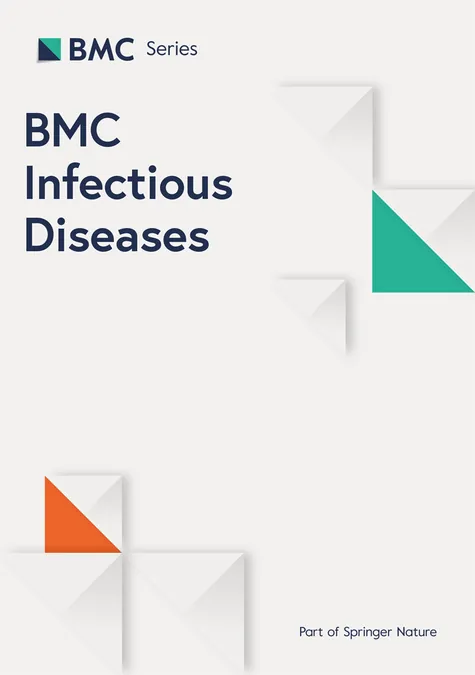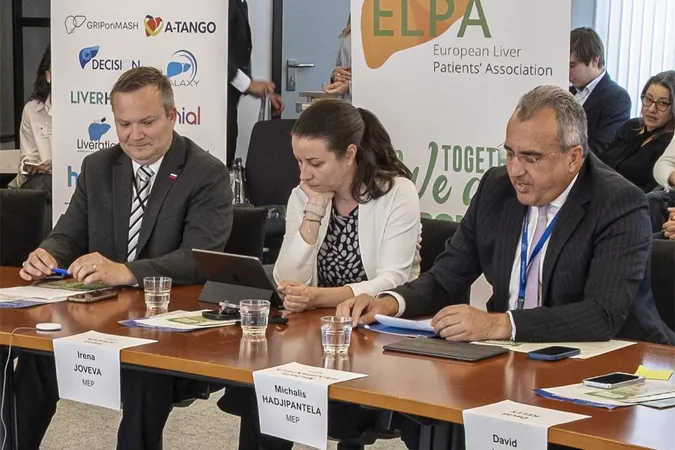
Understanding Virologic Suppression Rates in Third-Line HIV Treatment: Key Findings from Addis Ababa
2024-09-28
Author: Mei
Introduction
The devastating impact of HIV/AIDS continues to challenge global health systems, resulting in significant mortality, morbidity, and economic burdens, particularly in low- and middle-income countries. Antiretroviral therapy (ART) has revolutionized the management of HIV, yet virologic failure remains a significant hurdle that complicates treatment outcomes in 21st-century healthcare.
Study Overview
This cross-sectional study, conducted in Addis Ababa, Ethiopia, aimed to evaluate the rates of virologic suppression among patients receiving third-line ART and identify factors influencing treatment outcomes. Data were meticulously gathered from patients receiving care at four public hospitals in the city.
Results Highlight
The study involved 117 participants, with a median age of 44 years, predominantly male (53%), and a median HIV diagnosis duration of 14.25 years. Among the patients, a commendable virologic suppression rate of 76.9% was achieved after six months of treatment. This suggests that while third-line therapies can be effective, the success largely hinges on factors such as medication adherence. In fact, good adherence showed a significant correlation with virologic suppression, highlighting an adjusted odds ratio (AOR) of 8.48 for patients who consistently followed their treatment regimen.
Interestingly, factors such as the duration of second-line therapy and baseline viral load above 100,000 copies/ml demonstrated non-significant correlations with treatment outcomes, suggesting the complexity of HIV management and the multi-faceted aspects affecting virologic success.
Broader Context and Global Comparisons
Globally, HIV/AIDS remains a critical public health concern, with approximately 36.85 million individuals living with the virus as of 2019. The global response to HIV has evolved, with ART significantly reducing mortality rates and transforming HIV from a once-terminal illness into a manageable chronic condition. However, challenges persist, with rates of treatment failure and virologic failure varying widely due to geographical, cultural, and socioeconomic factors.
For instance, a clinical trial in India revealed a virologic failure rate of 71.5% among patients initiating third-line ART, while studies in Zimbabwe reported rates as high as 79%. These discrepancies underscore the urgent need for localized studies like the one in Addis Ababa, which can help identify unique challenges and inform targeted interventions.
Importance of Adherence and Future Directions
Adherence to ART remains a cornerstone of successful HIV management. Multiple studies have demonstrated that poor adherence correlates strongly with virologic failure, making it imperative that healthcare systems enhance support structures such as patient education, counseling, and community engagement initiatives to improve treatment engagement.
Furthermore, ensuring access to advanced ART options, coupled with robust healthcare infrastructure and training for healthcare providers, can significantly improve patient outcomes. Ongoing research into innovative treatment strategies and technologies is critical to evolving HIV/AIDS management and reducing treatment resistance.
Conclusion
The findings from Addis Ababa signify a crucial step in understanding the dynamics of third-line ART and virologic suppression in Ethiopia. By addressing adherence and other key factors, stakeholders can work towards reducing the burden of HIV/AIDS, ultimately improving health outcomes for millions affected by this challenging epidemic globally. As we advance, continued commitment to research, interventions, and resource allocation is imperative to confront the complex barriers presented by HIV treatment and care.
A Call to Action
As we unravel the challenges of HIV treatment, it’s crucial that we harness the power of community, knowledge, and collaboration to pave the way for a brighter and healthier future for individuals living with HIV/AIDS. Together, we can transform the narrative surrounding this global health crisis.





 Brasil (PT)
Brasil (PT)
 Canada (EN)
Canada (EN)
 Chile (ES)
Chile (ES)
 Česko (CS)
Česko (CS)
 대한민국 (KO)
대한민국 (KO)
 España (ES)
España (ES)
 France (FR)
France (FR)
 Hong Kong (EN)
Hong Kong (EN)
 Italia (IT)
Italia (IT)
 日本 (JA)
日本 (JA)
 Magyarország (HU)
Magyarország (HU)
 Norge (NO)
Norge (NO)
 Polska (PL)
Polska (PL)
 Schweiz (DE)
Schweiz (DE)
 Singapore (EN)
Singapore (EN)
 Sverige (SV)
Sverige (SV)
 Suomi (FI)
Suomi (FI)
 Türkiye (TR)
Türkiye (TR)
 الإمارات العربية المتحدة (AR)
الإمارات العربية المتحدة (AR)